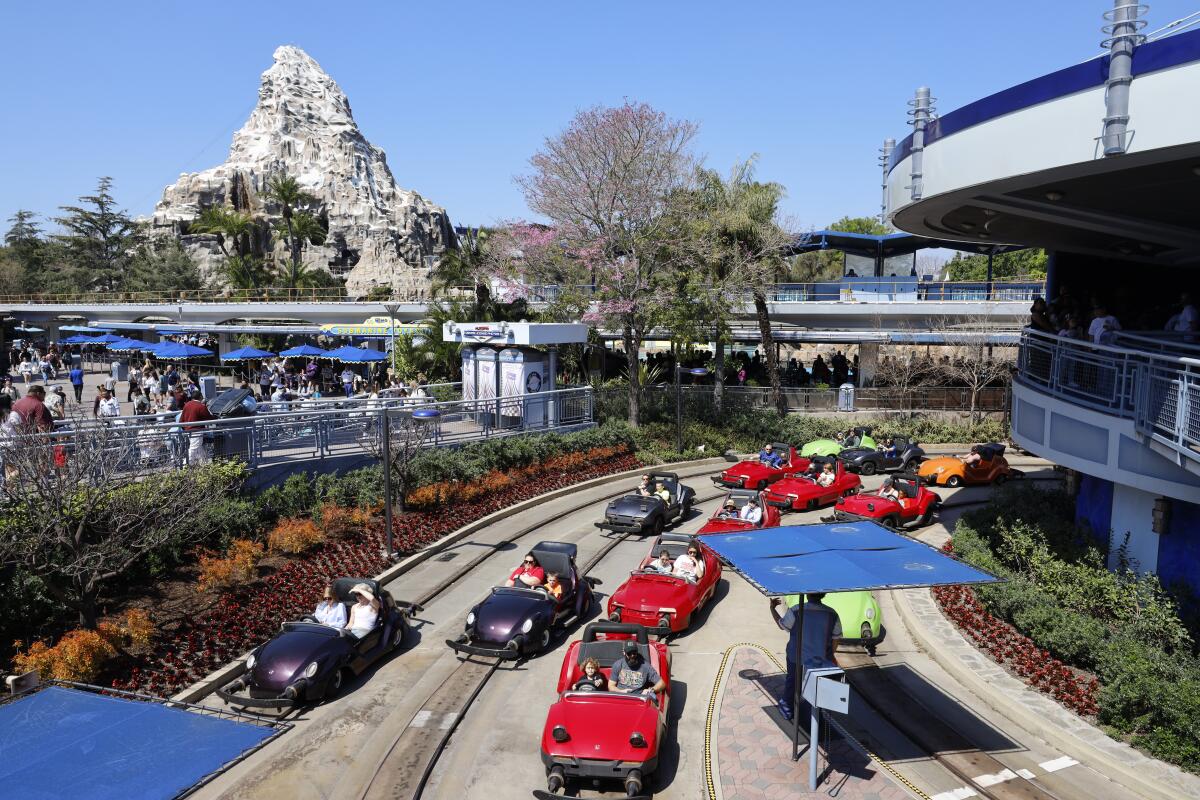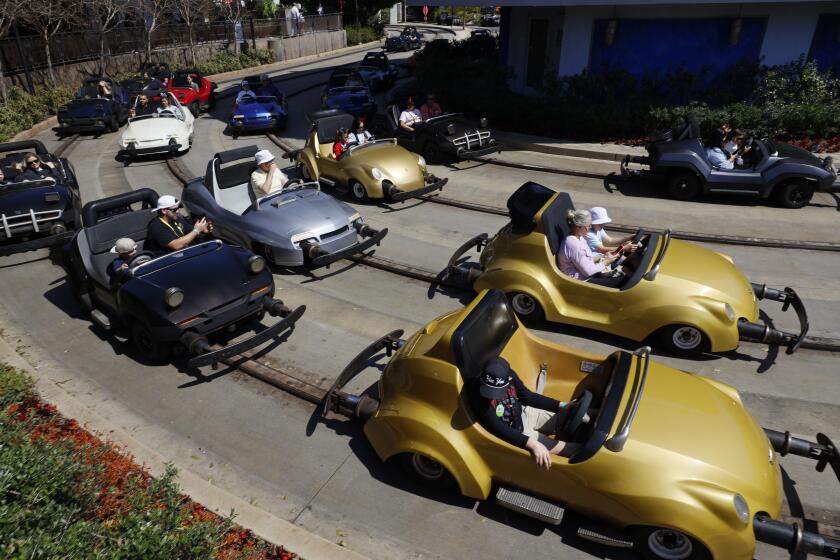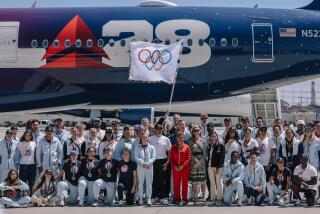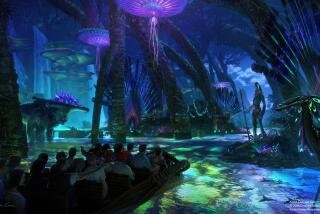Letters to the Editor: Slow, electrified cars that don’t kill anyone? Autopia should be everywhere

In many ways, Disneyland’s Autopia attraction shows what car travel could be if we made better choices. The engines have single-digit horsepower and the cars weigh hundreds of pounds, not thousands, so crashes tend to produce laughter more than injury. The slow speeds and connection to the surroundings make for a more leisurely driving experience.
Who wouldn’t want their street to look less like a no-man’s land and more like Autopia?
But the fumes — good God, the fumes. Standing in line at Disneyland inhaling lawnmower exhaust was once a feature of childhood in Southern California. Perhaps as a sign of how much our air quality has improved, my own elementary-aged children could barely tolerate breathing while waiting to ride Autopia when we last visited Disneyland about a year ago.
That’s about to change. As The Times’ climate columnist Sammy Roth reported this week, Disneyland plans to electrify Autopia — with hybrid or fully electric vehicles isn’t yet clear — in the next few years.
Slow, fun, nonlethal and at least partially electric — maybe Autopia truly will be the best driving experience in Southern California. Now, if only we could do something about the cars and roads outside Disneyland.
————
Disneyland is finally planning to convert its fossil fuel fleet of mini cars to electric vehicles, but why stop there? Disney can envision a more ambitious transportation future.
To the editor: As people who were quoted in Sammy Roth’s column, we were delighted to hear that Disneyland “has developed a roadmap to electrify” Autopia, which one ride employee said gives them headaches. Doesn’t that signal illness?
We all know the dangers of proximity to auto exhaust. Proposition 65 warns us not to linger in outdoor gas stations to avoid exposure to chemicals that can cause cancer.
But Disneyland doesn’t need “years” to convert. It already has two all-EV rides in Anaheim, the Radiator Springs Racers and Luigi’s Rollickin’ Roadsters. Also, Disneyland must commit to all-electric plug-in cars. Hybrids will still emit dangerous fumes. No plug, no deal.
Add some nearby solar panels, as Roth suggests, and give the attraction a new name that truly inspires: “Driving on Sunshine.” And keep that Monorail running as a glorious example of the public transit we need more of.
Now, that would be the “Happiest Place on Earth.”
Zan Dubin and Paul Scott, Santa Monica
Dubin is co-founder of National Drive Electric Week; Scott is co-founder of Plug In America.
..
To the editor: Replacing fully gasoline cars at Autopia with hybrids is not the answer, as hybrid cars still use gasoline. There is a reason gasoline is called a fossil fuel: It is an outdated way to power cars.
Vehicles of Tomorrowland should be powered by electricity made by the sun — clean energy that does not harm workers, kids at Disneyland or the planet.
Alexandra Paul, Pacific Palisades
..
To the editor: I was intrigued by Roth’s column on electrifying Autopia.
I remember when the ride opened, it was sponsored by Richfield Oil, now ARCO, and there was a small billboard along the ride’s path touting the company’s “Boron” fuel additive. I wonder if Disneyland has sought a new company, possibly one that provides electricity, as a commercial partner.
But while we’re trying to clean the air, it would be a shame if that partner wants to add to visual pollution by installing its own billboard along Autopia Way.
Mitch Waldow, Beverly Hills
..
To the editor: Roth ignored one of the most important turning points in the evolution of sustainable operations in Tomorrowland at Disneyland. In 2007 Disney reopened the Submarine Voyage ride themed to the movie “Finding Nemo” — re-powered by, wait for it, electricity.
Disney gambled on a relatively new technology, inductive power transfer, to revive the long mothballed submarine fleet. As can be imagined, there was considerable initial opposition to this change internally at the park. The natural reaction to mixing electricity and water is understandable.
Still, the decision to go electric turned out to be a win-win. The operational and maintenance costs for the ride were significantly reduced. The air quality for the guests and operators was significantly improved. The possibility of contaminating the water with an oil or diesel fuel spill was eliminated.
The electrification of Disneyland’s Autopia will likely result in similar benefits, but it is not a first for Disneyland or even Disney. The honor of the first electrified Autopia, opened in 2006, goes to Hong Kong Disneyland.
Disneyland management is, arguably, reluctant to mess with popular attractions. But in the case of the Finding Nemo Submarine Voyage, it took a chance and hit a home run.
William Willcox, Simi Valley
The writer is a retired Disney Imagineer.
..
To the editor: An entertainment giant like Disney does not need several years to make this simple decision, especially after missing the chance during the ride’s refresh eight years ago.
Electric go-carts are simple to build and maintain, and have been around for decades. Honda, Autopia’s sponsor, knows all this. But like Toyota, Honda is infamously reluctant to convert its vehicle fleet to electricity. Honda continues to champion financial profit over the health of our children.
Disney’s creatives and Honda’s engineers should spend their time contemplating this upgrade to electric vehicles by standing for hours in line next to the Autopia track, hearing the cacophony and breathing the poisonous air from the nasty little gas engines.
I bet it wouldn’t take them several more years to figure it out.
Darell Dickey, Davis, Calif.
..
To the editor: Thanks for another in a series of articles on the intersection of L.A.’s core business — entertainment — and the climate crisis.
Human societies have used myths and stories to teach the truths about proper behavior and our place in the cosmos since before we even had a history. Once it was a shaman and story teller, now it is Hollywood.
The slow, decades-long increase in the average temperature of the planet presents a crisis unlike any we have faced. We are wired for “fight or flight” survival, but now we face a danger that is invisible and knowable mostly from careful measurement and observation.
We need stories that can remind us that humans have triumphed from using trust, cooperation and community. We also need a Tomorrowland that can envision a different tomorrow with humans sharing the planet with all other life.
Robert Buckner, Sierra Madre
..
To the editor: Perhaps Disney should consider changing the name from Tomorrowland to “Yesterdayland,” so as to not confuse children as to what their future has in store for them.
Roger Taylor, Brea
More to Read
A cure for the common opinion
Get thought-provoking perspectives with our weekly newsletter.
You may occasionally receive promotional content from the Los Angeles Times.












